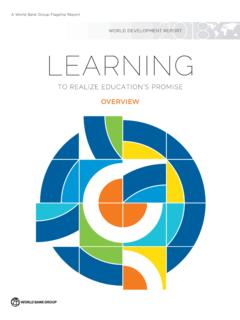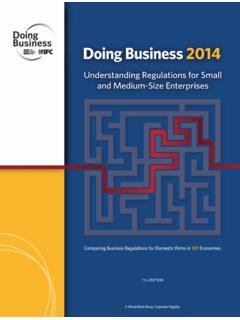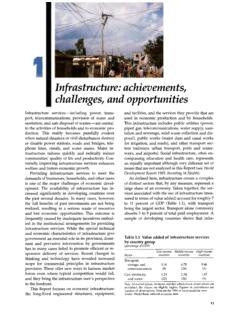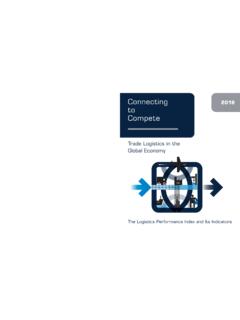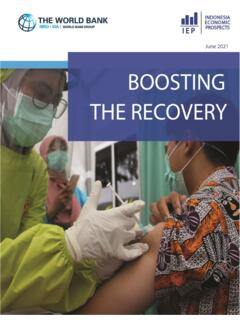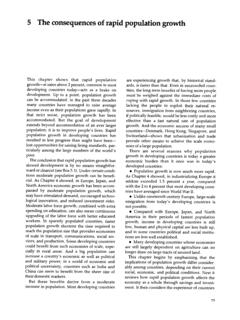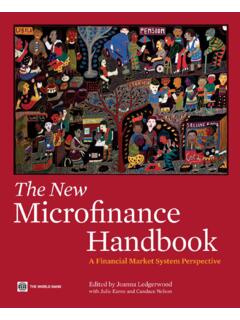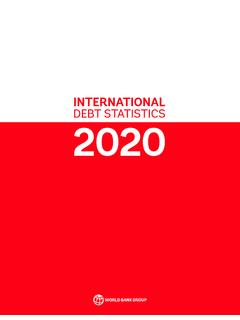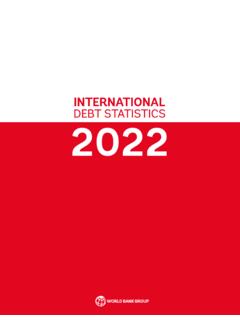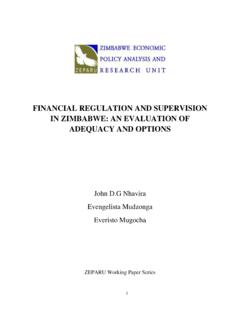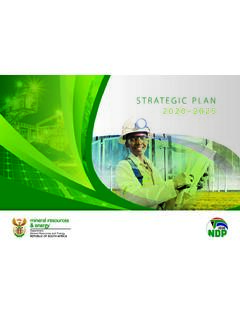Transcription of Commodity Markets Outlook. October 2021.
1 AnalysisEMBARGOED: NOT FOR NEWSWIRE TRANSMISSION, POSTING ON WEBSITES, OR ANY OTHER MEDIA USE UNTIL JANUARY 26, 2016, 10:00AM EST (1500 GMT) EMBARGOED: NOT FOR NEWSWIRE TRANSMISSION, POSTING ON WEBSITES, OR ANY OTHER MEDIA USE UNTIL JANUARY 26, 2016, 10:00AM EST (1500 GMT)Urbanization and Commodity Demand Commodity Markets OutlookA World Bank ReportOCTOBER 2021 AprAprOctOctOCTOBER 2021 Commodity Markets Outlook 2021 International Bank for Reconstruction and Development / World Bank 1818 H Street NW, Washington, DC 20433 Telephone: 202-473-1000; Internet: Some rights reserved. This work is a product of the staff of The World Bank with external contributions. The findings, interpretations, and conclusions expressed in this work do not necessarily reflect the views of The World Bank, its Board of executive Directors, or the governments they represent.
2 The World Bank does not guarantee the accuracy, completeness, or currency of the data included in this work and does not assume responsibility for any errors, omissions, or discrepancies in the information, or liability with respect to the use of or failure to use the information, methods, processes, or conclusions set forth. The boundaries, colors, denominations, and other information shown on any map in this work do not imply any judgment on the part of The World Bank concerning the legal status of any territory or the endorsement or acceptance of such boundaries. Nothing herein shall constitute or be construed or considered to be a limitation upon or waiver of the privileges and immunities of The World Bank, all of which are specifically reserved. Rights and PermissionsThis work is available under the Creative Commons Attribution IGO license (CC BY IGO) Under the Creative Commons Attribution license, you are free to copy, distribute, transmit, and adapt this work, including for commercial purposes, under the following conditions:Attribution Please cite the work as follows: World Bank Group.
3 2021. Commodity Markets Outlook: Urbanization and Commodity Demand, October 2021. World Bank, Washington, DC. License: Creative Commons Attribution CC BY IGO. Translations If you create a translation of this work, please add the following disclaimer along with the attribution: This translation was not created by The World Bank and should not be considered an official World Bank translation. The World Bank shall not be liable for any content or error in this translation. Adaptations If you create an adaptation of this work, please add the following disclaimer along with the attribution: This is an adaptation of an original work by The World Bank. Views and opinions expressed in the adaptation are the sole responsibility of the author or authors of the adaptation and are not endorsed by The World Bank. Third-party content The World Bank does not necessarily own each component of the content contained within the work.
4 The World Bank therefore does not warrant that the use of any third-party-owned individual component or part contained in the work will not infringe on the rights of those third parties. The risk of claims resulting from such infringement rests solely with you. If you wish to re-use a component of the work, it is your responsibility to determine whether permission is needed for that re-use and to obtain permission from the copyright owner. Examples of components can include, but are not limited to, tables, figures, or images. All queries on rights and licenses should be addressed to World Bank Publications, The World Bank Group, 1818 H Street NW, Washington, DC 20433, USA; e-mail: The cutoff date for the data used in this report was October 19, 2021. iii Table of Contents Figures Acknowledgments .. v executive summary .. 1 Special Focus: Urbanization and Commodity demand.
5 5 Commodity Market Developments and Outlook .. 23 Energy .. 25 Agriculture .. 32 Fertilizers .. 38 Metals and Minerals .. 40 Precious Metals .. 42 Appendix A: Historical Commodity prices and price 43 Appendix B: Supply-Demand 51 Appendix C: Description of price and technical notes .. 83 Figure 1 Commodity market developments .. 2 Figure Urban population trends .. 7 Figure Urban population growth and Commodity demand .. 8 Figure Urban population share and population density .. 10 Figure Urban populations and transport-sector energy demand in the United States. 12 Figure Urban populations and household energy use in the United States .. 13 Figure 2 Oil market developments .. 25 Figure 3 Oil production developments .. 26 Figure 4 Oil market outlook .. 27 Figure 5 Energy price developments .. 29 Figure 6 Energy market developments in Europe.
6 30 Figure 7 Agricultural price developments .. 32 Figure 8 Supply conditions for grains and edible oils .. 33 Figure 9 Risks to the food Commodity .. 35 Figure 10 Domestic food price inflation and food insecurity .. 36 Figure 11 Beverage Commodity market 37 Figure 12 Agricultural raw materials market developments .. 38 Figure 13 Fertilizer market 39 Figure 14 Metals and minerals market 40 Figure 15 Precious metals market developments .. 42 iv Tables Table 1 Nominal price indexes and forecast revisions .. 3 Table Literature review of urbanization and Commodity demand .. 17 Table Commodity prices .. 45 Table Commodity prices forecasts in nominal dollars .. 47 Table Commodity prices forecasts in constant dollars (2010=100) .. 48 Table Commodity price index forecasts (2010=100) .. 49 v Many people contributed to the report.
7 Peter Nagle authored the Special Focus on Urbanization and Commodity Demand. Section authors include Peter Nagle (energy), John Baffes (agriculture), Francisco Arroyo Marioli (metals), and Wee Chian Koh (fertilizers and precious metals). Shane Streifel provided input and reviewed the report. Maria Hazel Macadangdang produced the supply-demand balance section. Kaltrina Temaj and Muneeb Naseem provided research assistance. Design and production was handled by Adriana Maximiliano. Graeme Littler produced the accompanying website. Arika Kayastha produced the webcharts. Carlos Arteta, Betty Dow, Madhur Gautam, Alain Kabundi, Somik Lall, Graeme Littler, Taylor Victoria Miller, Mark Roberts, Franz Ulrich Ruch, Garima Vasishtha, and Sameh Wahba reviewed the report. External affairs for the report were managed by Joseph Rebello supported by Stephanie Crockett, Jose Carlos Ferreyra, Kavell Joseph, and Torie Smith.
8 Staff of the Translation and Interpretation Services unit provided translations of dissemination materials. The World Bank s Commodity Markets Outlook is published twice a year, in April and October . The report provides detailed market analysis for major Commodity groups, including energy, agriculture, fertilizers, metals, and precious metals. Price fore-casts to 2035 for 46 commodities are presented, together with historical price data. The report also contains production, consumption, and trade statis-tics for major commodities. Commodity price data updates are published separately at the beginning of each month. Background analytical work presented in this report was generously funded by the Government of Japan through the Policy and Human Resources Development (PHRD) Fund, administered by the World Bank Group. The report and data can be accessed at: For inquiries and correspondence, email at: Acknowledgments This World Bank Group Report is a product of the Prospects Group in the Equitable Growth, Finance, and Institutions (EFI) Vice Presidency.
9 The report was managed by John Baffes under the general guidance of Ayhan Kose and Franziska Ohnsorge. executive summary CO MMO DITY Markets O UTLOO K | O CTO BER 2021 1 Recent trends Energy prices rose sharply in 2021Q3 while non-energy prices plateaued (figure ). Among the four major non-energy indexes, agriculture, fertilizers, and precious metals are about one-third above their pre-pandemic levels, while metals and minerals are around one-half higher. Adverse weather has buffeted many Commodity Markets : unusually high summer temperatures increased demand for electricity; droughts reduced hydro-electricity supply and affected some agricultural commodities, while floods impacted the supply of some metals and coal. Soaring natural gas and coal prices indirectly impacted production of other commodities, including fertilizers and some metals.
10 Commodity Markets have also been affect-ed by the uneven recovery from the COVID-19 pandemic and supply chain disruptions. Energy prices rose by 16 percent in 2021Q3 (q/q), continuing their upward trajectory since the start of the year, with natural gas and coal prices rising much faster than crude oil prices. Crude oil prices averaged $72/bbl in 2021Q3, an increase of 7 percent on the previous quarter, but with prices fluctuating significantly during the period. Prices initially softened in August amid worries about renewed outbreaks of the pandemic, but these were offset later in the quarter by supply disruptions in the arising from Hurricane Ida, as well as the broader rally in energy prices. Energy prices continued to surge in the third quarter of 2021 while most non-energy prices plateaued following steep increases earlier in the year.
